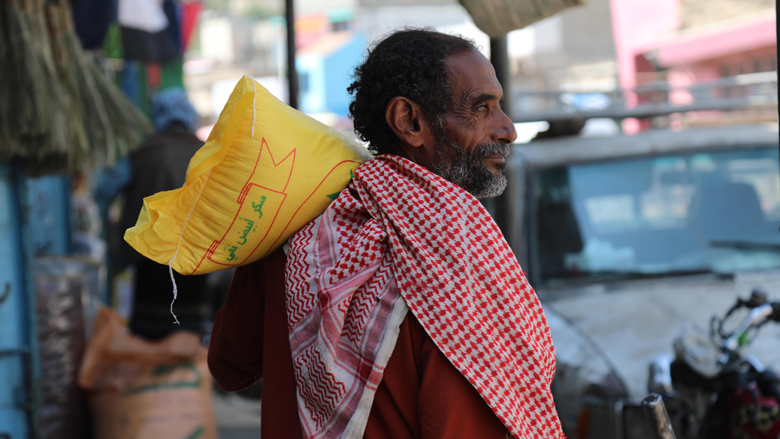Challenge
Yemen has been embroiled in civil war since 2015. Even before the conflict, Yemen was one of the poorest countries in the region. The last few years have created a full-scale humanitarian crisis. As of March 2017, approximately 60 percent of the total population was food insecure. Malnutrition has increased by 57 percent since the outbreak of the conflict. Many of those effected are children under five. Nearly half the population lives in areas directly affected by the conflict, and 80 percent are in need of humanitarian assistance. Basic services across the country are not-functioning and even aid delivery has been impeded by violence and security concerns.
Since the mid-1990s, Yemen’s national cash transfer program, the Social Welfare Fund (SWF) has played an important role in the country’s social protection system. It has provided vital support for the country’s most vulnerable families. Since the end of 2014, the SWF has been unable to operate. In response to this emergency, the World Bank and UNICEF have partnered to provide cash support to the former SWF beneficiaries.
Approach
The cash transfer project is supported by a US$200 million grant from the International Development Association (IDA-the Bank’s fund for the world’s poorest countries) in support of Yemen. It is part of an ongoing Emergency Crisis Response Project. The project is implemented by UNICEF and targets Yemen’s most vulnerable families by using the existing beneficiary list from Yemen’s SWF cash transfer program.
The IDA-funded project finances cash benefits and the technical assistance and services required to deliver them. UNICEF has engaged several private sector providers to support the delivery processes. The delivery of the cash transfers includes communication with beneficiaries and field facilitation of the process, along with identity verification and a system for addressing any grievances.
An independent, third-party organization has been contracted to ensure the project is maintaining standards of integrity and to verify payments. Case management and payments are implemented through both fixed sites and mobile teams for more remote areas. This allows for the cash transfers to be distributed across all of Yemen’s 333 districts. The first quarterly round of benefits ended in October 2017 and the second payment will be delivered in March 2018.
Results
- Over 1.33 million families, totaling almost 9 million Yemenis (approximately 30 percent of the population) benefited from cash transfers in the first cycle.
- A monitoring process at the end of the cycle found that 9 out of 10 beneficiaries spent the full amount shortly after having received it to purchase food, cover medical expenses, or pay debts.
- Women represented almost half of the direct recipients of the transfers.
- A robust delivery system has been developed and is operating nationally, despite an extremely challenging operating environment.


